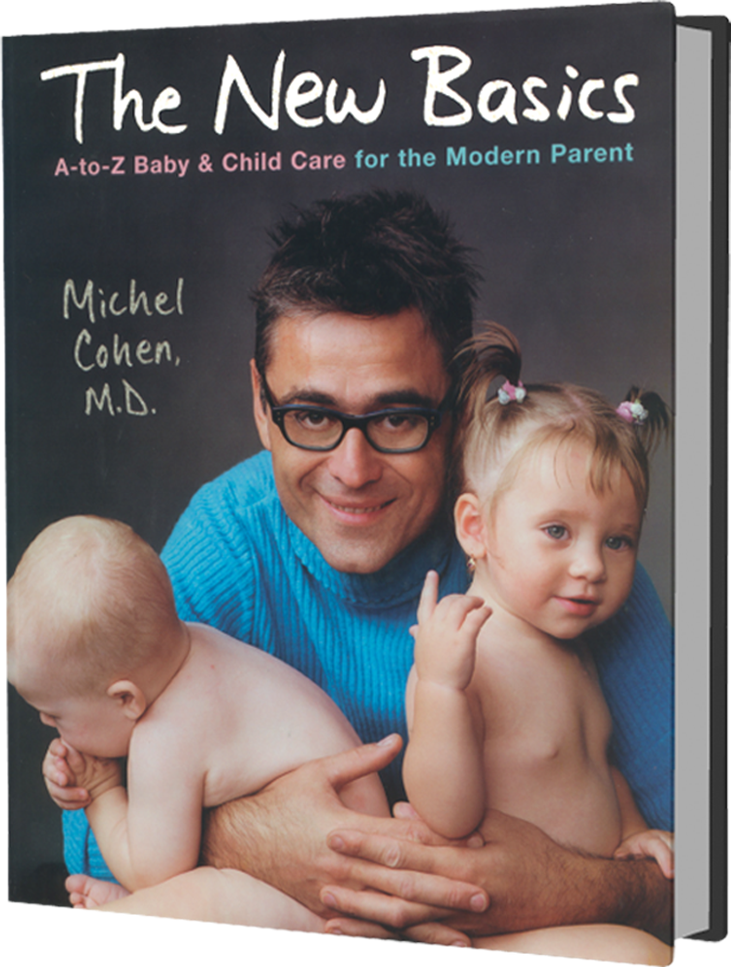
Napping
Infants
 Many parents’ lives revolve around their baby’s nap schedule. Up to six months, Lucy will sleep like a kitten without any pattern. After that age, you’ll see some regularity in her schedule. But the amount of napping still varies greatly. Some babies sleep three to four hours at a stretch or take two naps daily, while others won’t sleep at all during the day. My advice is that you go about your business and not enforce naps too strictly. If she’s tired, Lucy will find a way to sleep, whether at home in her crib or outside in a stroller, a car seat, or in your arms.
Many parents’ lives revolve around their baby’s nap schedule. Up to six months, Lucy will sleep like a kitten without any pattern. After that age, you’ll see some regularity in her schedule. But the amount of napping still varies greatly. Some babies sleep three to four hours at a stretch or take two naps daily, while others won’t sleep at all during the day. My advice is that you go about your business and not enforce naps too strictly. If she’s tired, Lucy will find a way to sleep, whether at home in her crib or outside in a stroller, a car seat, or in your arms.
If you find yourself performing a half-hour soothing routine and tiptoeing out of the room before Lucy’s naps, you may want to change your strategy, more for your benefit than for hers. Of course this is not a problem if you enjoy the closeness of the moment and have the time to spare. But keep in mind that rubbing her back or forehead is just a soothing habit. Nappers who don’t want to nap on their own usually don’t want to go to sleep on their own at night either and also wake up throughout the night. Deal with nap issues just as you deal with nighttime sleep issues [See: Sleep].
In Toddlers
 In order to better understand napping, you have to visualize the different states of wakefulness in an older infant. Jimmy begins his day happy and giggly, and then gradually becomes more active. At the peak of his activity, one of two things occurs: Either he cools down and takes a snooze on his own, or he continues to push the envelope of activity beyond the pale, a sign that he needs rebooting. When he reaches that point, lay him down in his crib. If he sleeps willingly or cries himself to sleep after a few minutes, that’s good. When he wakes up, you’ll find a rejuvenated Jimmy. If he cries for just ten to fifteen minutes but doesn’t sleep, that’s good too. Take him out of the crib. Crying relieves just as much tension as sleeping does. If he has calmed down, resume your day: singing, playing, learning to walk, and so forth. If he’s still all over the place, put him back in the crib for another ten minutes. Repeat until he is calmer or asleep.
In order to better understand napping, you have to visualize the different states of wakefulness in an older infant. Jimmy begins his day happy and giggly, and then gradually becomes more active. At the peak of his activity, one of two things occurs: Either he cools down and takes a snooze on his own, or he continues to push the envelope of activity beyond the pale, a sign that he needs rebooting. When he reaches that point, lay him down in his crib. If he sleeps willingly or cries himself to sleep after a few minutes, that’s good. When he wakes up, you’ll find a rejuvenated Jimmy. If he cries for just ten to fifteen minutes but doesn’t sleep, that’s good too. Take him out of the crib. Crying relieves just as much tension as sleeping does. If he has calmed down, resume your day: singing, playing, learning to walk, and so forth. If he’s still all over the place, put him back in the crib for another ten minutes. Repeat until he is calmer or asleep.
That said, all children have different sleep requirements. As early as eight months, some kids are happy to bounce around all day without any nap. If yours is one of them, you may be the one who needs the nap.




 MEDICATION DOSAGE
MEDICATION DOSAGE

